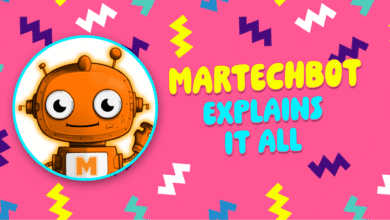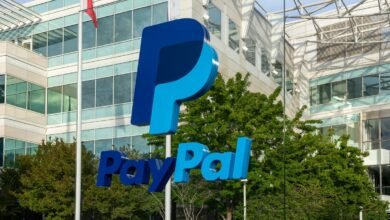The Great SEO Normalization is Here

▼ Summary
– The era of measuring SEO success through inflated traffic numbers has ended due to Google’s algorithm updates and AI Overviews targeting low-value content.
– Top-of-funnel informational content like glossary and FAQ pages has seen major traffic declines, as it rarely influenced conversions and is being replaced by AI summaries.
– AI search is reducing clicks for generic queries by providing pre-loaded answers, but it cannot fully replace high-intent, bottom-of-funnel content requiring citations and brand mentions.
– Effective SEO now requires focusing on middle and bottom-of-funnel content, branded pages, and optimizing for AI-driven searches that need real-time data or LLM grounding.
– Companies should track meaningful metrics like grounded prompts and conversions, diversify marketing channels, and adapt to the new reality where quality engagement matters more than vanity traffic.
The era of judging SEO success by endlessly climbing traffic charts has officially ended. For a long time, marketing teams celebrated soaring session numbers and shared screenshots of analytics dashboards as definitive proof of a winning strategy. That approach no longer holds water in today’s search environment.
We are witnessing a significant decoupling where the value of purely informational traffic has plummeted. The SEO playbook celebrated over the past decade often prioritized amassing huge volumes of low-value traffic. Agencies and in-house teams alike sometimes misled leadership by inflating these numbers to impressive, yet ultimately hollow, levels. Online platforms were filled with case studies glorifying tactics like programmatic SEO and “SEO heists” that generated countless irrelevant clicks, fostering a copycat culture that degraded the overall quality of search results.
The aftermath is now clear. Google has intensified its battle against generic, low-value content through the deployment of AI Overviews and algorithm updates specifically targeting scaled content abuse. This marks the arrival of a great normalization in search.
It appears that impression counts were often artificially inflated by activity from SEO tools themselves. However, the problem runs deeper. The standard B2B SEO strategy became a rigid, formulaic imitation of classic inbound marketing, pushing companies to target high-volume definitional keywords through endless glossary and FAQ pages. Look at any cybersecurity firm, for instance, and you’ll likely find nearly identical SEO blueprints. The truth is, many websites never truly earned those clicks, as the content was either off-topic or played a minimal role in driving actual business outcomes.
Real-world data confirms this top-of-funnel collapse. One B2B cybertech client experienced a drastic 70% drop in traffic to its glossary pages. A marketing technology company saw a similar 70% decline in FAQ content visits. Another brand in business operations lost approximately 60% of the traffic to its definitions section, while a B2B data operations client reported a 55% decrease in glossary page views.
Artificial intelligence acts as a powerful equalizer, consuming top-of-funnel clicks because it can effortlessly summarize established information from its training data. This capability fuels the rise of zero-click searches. In many mature topic areas, AI models like ChatGPT, Claude, and Gemini have already absorbed the answers to most general queries. For these pre-loaded answers that don’t require the AI to search the live web, there is zero chance for your brand to be recommended or cited.
AI Overviews for informational searches are a natural extension of earlier features like featured snippets and “People Also Ask” boxes, each iteration further reducing traditional traffic opportunities.
The evidence from numerous Google Search Console accounts is undeniable: educational blogging as a core marketing tactic has ceased to be effective. Top-of-funnel informational pages have become largely irrelevant. These were clicks that seldom led to conversions and now represent the bulk of traffic declines. Organizations that focused on inflating vanity metrics are now facing the consequences.
However, not all content has lost its value. Middle-of-funnel material, such as pages that compare solutions or offer evaluation guides, continues to attract users who are genuinely considering a purchase. Optimizing for AI-driven search queries that require live data and citations remains a worthwhile endeavor.
The critical importance of bottom-of-funnel intent cannot be overstated. High-intent queries, for example “best insider threat platforms,” demand citations and grounded answers. AI cannot completely replace these pages, making them incredibly valuable for both organic search visibility and revenue attribution.
Branded content is also holding its ground. Research from Siege Media indicates that homepage traffic is actually increasing in this AI era. Companies that invest in building a strong reputation, creating content with clear commercial intent, and managing their digital ecosystem will maintain visibility, even as AI-generated answers take over general topic areas.
This shift is also transforming how we measure success. Monitoring specific AI prompts is rapidly becoming the new equivalent of tracking keyword rankings. Tracking generic prompts that return AI answers without citations or brand mentions is pointless. The only prompts worth monitoring are those that force the AI to ground its response in live data or real-time references.
This evolution beyond the decoupling is the Great Normalization, where top-of-funnel traffic is swiftly declining. Brands must now compete for a smaller pool of available clicks, but the engagement from these higher-intent searches is far more meaningful. A recent Semrush study supports this, finding that “AI search visitors tend to convert better because LLMs can equip users with all the information they need to make a decision.”
Here are practical ways to refine your SEO strategy for today’s search reality and focus on metrics that truly measure business results:
Stop chasing top-of-funnel traffic. Shift your energy toward developing branded, middle-, and bottom-funnel content that directly supports conversions. The Great SEO Normalization marks a healthy adjustment in strategy. As top-of-funnel clicks decline, the value of branded searches and conversion-driven optimization grows stronger. Companies that adapt their SEO playbook to this dual environment, where traditional search and AI discovery coexist, will stay ahead by focusing on what genuinely moves customers to act.
(Source: Search Engine Land)





